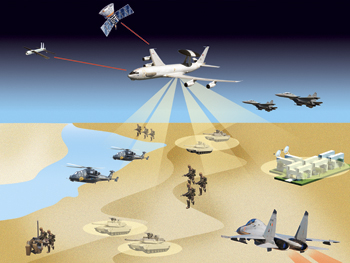INDIAN ARMED FORCES CHIEFS ON
OUR RELENTLESS AND FOCUSED PUBLISHING EFFORTS

SP Guide Publications puts forth a well compiled articulation of issues, pursuits and accomplishments of the Indian Army, over the years

I am confident that SP Guide Publications would continue to inform, inspire and influence.

My compliments to SP Guide Publications for informative and credible reportage on contemporary aerospace issues over the past six decades.
C4I2SR — is this getting adequate attention?
 |
By Lt. General P.C. Katoch (Retd) Former Director General of Information Systems, Indian Army |

The increasing importance C4I2SR is unquestionable. Battlefield requirements have changed with long range precision weapons, increased lethality and high mobility. Space and cyberspace have added new dimensions. Battlefield transparency, technological superiority, information advantage, telescoped sensor to shooter link and decision cycle are of vital importance. We must exploit technology to boost combat potential at strategic, operational and tactical levels transcending the physical, information and cognitive domains of war. Optimizing C4I2SR enables Defence Forces transform into NCW capable forces.
Net-centricity requires a reliable and robust communications network that ensures interoperability within the Services, entire security establishment and concerned government agencies. C4I2SR can mould public opinion and assist in perception management. While Services are progressing individually towards NCW capabilities, an integrated C4I2SR structure to link the strategic, operational and tactical domains needs to be established. Roadmaps of Information and Communications must converge into an integrated Information Communication Technology (ICT) roadmap, which has yet to take off. Under the elusive dedicated Defence Band.
Services need to focus on spectrum management and technology to telescope bandwidth. Resistance to change apart, senior officers, especially those in decision making hierarchy dealing with the C4I2SR network, need to make extra effort to understand technology. Intransigence and in Service bureaucracy is not permitting the much needed C4I2SR network to progress with the desired momentum. Adding to these negative factors is the government apathy towards appointing a Chief of Defence Staff despite strong recommendations made by the Kargil Review Committee a decade back. Importance of interoperability increases manifold owing to future joint operations and situational awareness to enable cohesive application of joint forces. Challenges that need to be overcome are frequent changes in requirements, security architecture, connectivity matrix and points of exchange of information, integration, legacy systems, standards and protocols, functionalities and procedures, time sensitivity, human resource issues, training of users and management of trained manpower. Implementation strategy should include operational interoperability, joint doctrine, identification of information required and its form, time frame in which information is required, joint training standards, technical interoperability and interface requirements of various systems.
Architecture of the systems must have a common database, compatible communications and applications standards. Middleware technology should be developed to achieve interoperability. Integration of legacy systems needs to be taken care of after evaluating the residual life and viability of such systems. Strategic surveillance can be ensured by fusing data from all strategic sources such as satellites and then fused data being made available in real time. A design of common applications for integrated C4I2SR is also required. C4I2SR system can be viewed as the final state which would act as a force multiplier. Besides, more results would appear like integration of various sensors, weapon platforms and logistics operating in varied environments of the three Services in a seamless manner. Robustness imparted to the system should enable its survivability during operations including nuclear contingencies. The system should be operational from land, air and sea. Synergy in warfare can only be achieved if there is interoperability between disparate systems of the Services. Some of the issues related to interoperability concern the organization / environment where development takes place, while others are related to the actual development process itself. Command and control functions have to be re-scripted.
The battlefield needs to be 'flattened' and hierarchical set ups in various systems and sub-systems including communication have to be adjusted according to the requirements of changing times. Finally, while indigenous systems are very much desired the Government must ensure a level playing field allowing equal opportunities to the private industry, drawing in the best technology. To respond to 21st Century battlefield requirements the defence forces need to usher in change. Through this transition to NCW capabilities, the requirement of information superiority and information assurance will remain dominant. Our present status is that: Army's Tactical Command Control and Information (Tac C3I) system is inching forward at an excruciatingly slow pace; Project Army Strategic Operational Information Dissemination System (ASTROIDS) and the Tactical Communication System (TCS) are yet to see the light of the day; common software for the Defence Communication Network is yet to be developed; our mapping is 30 years behind, to name a few. The bottom-line is to ask ourselves have we really acknowledged information as a strategic asset?





